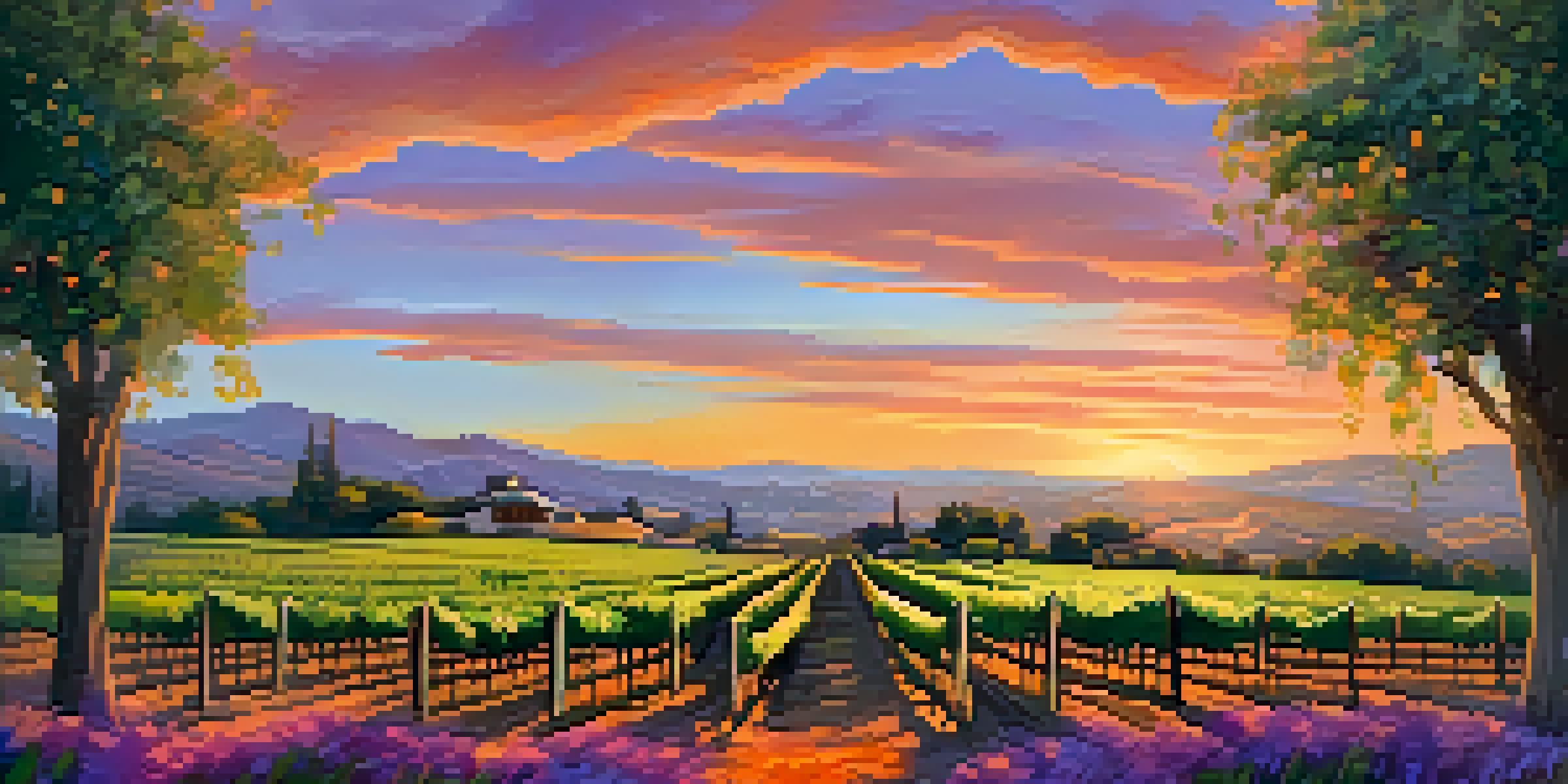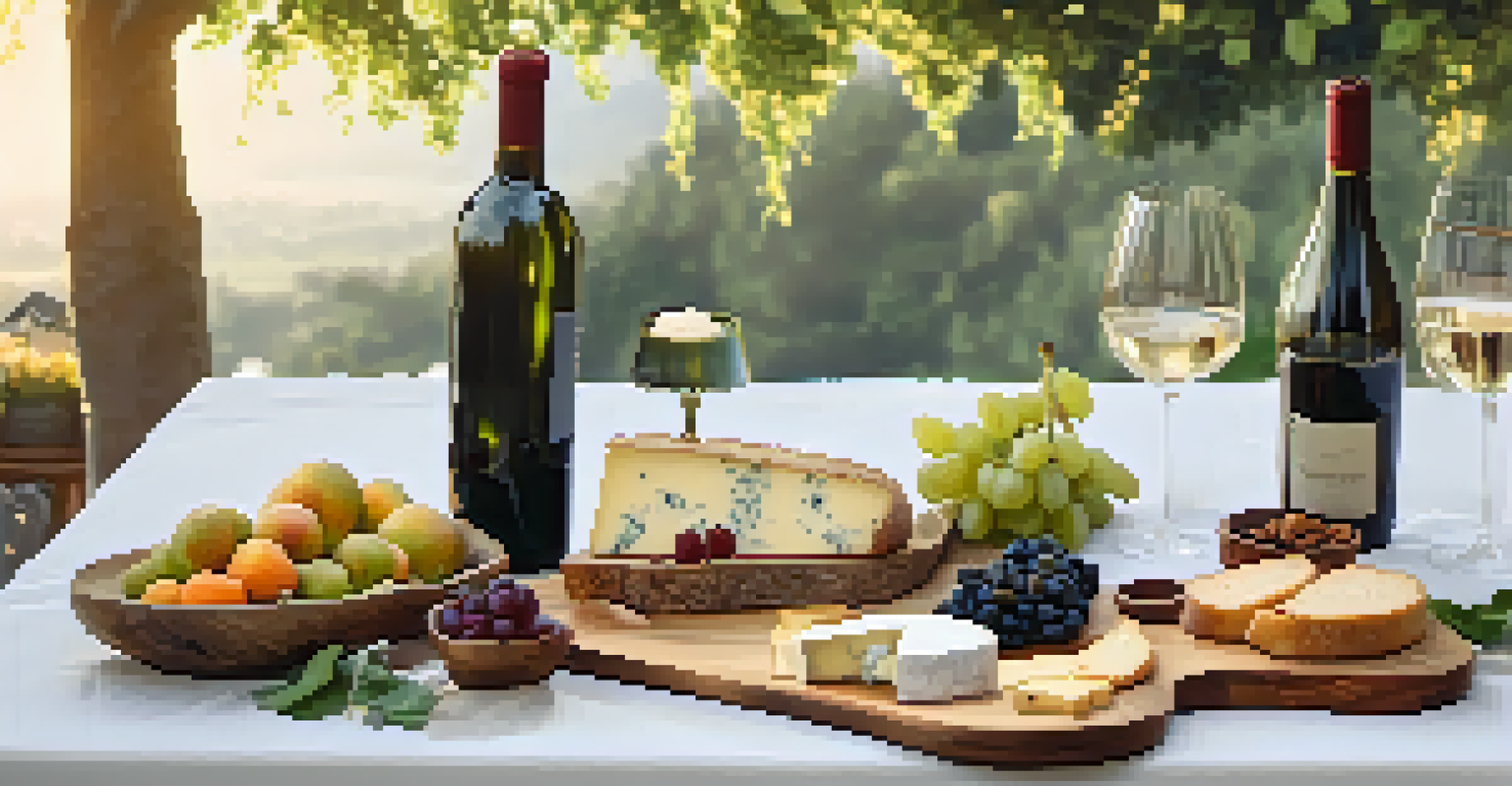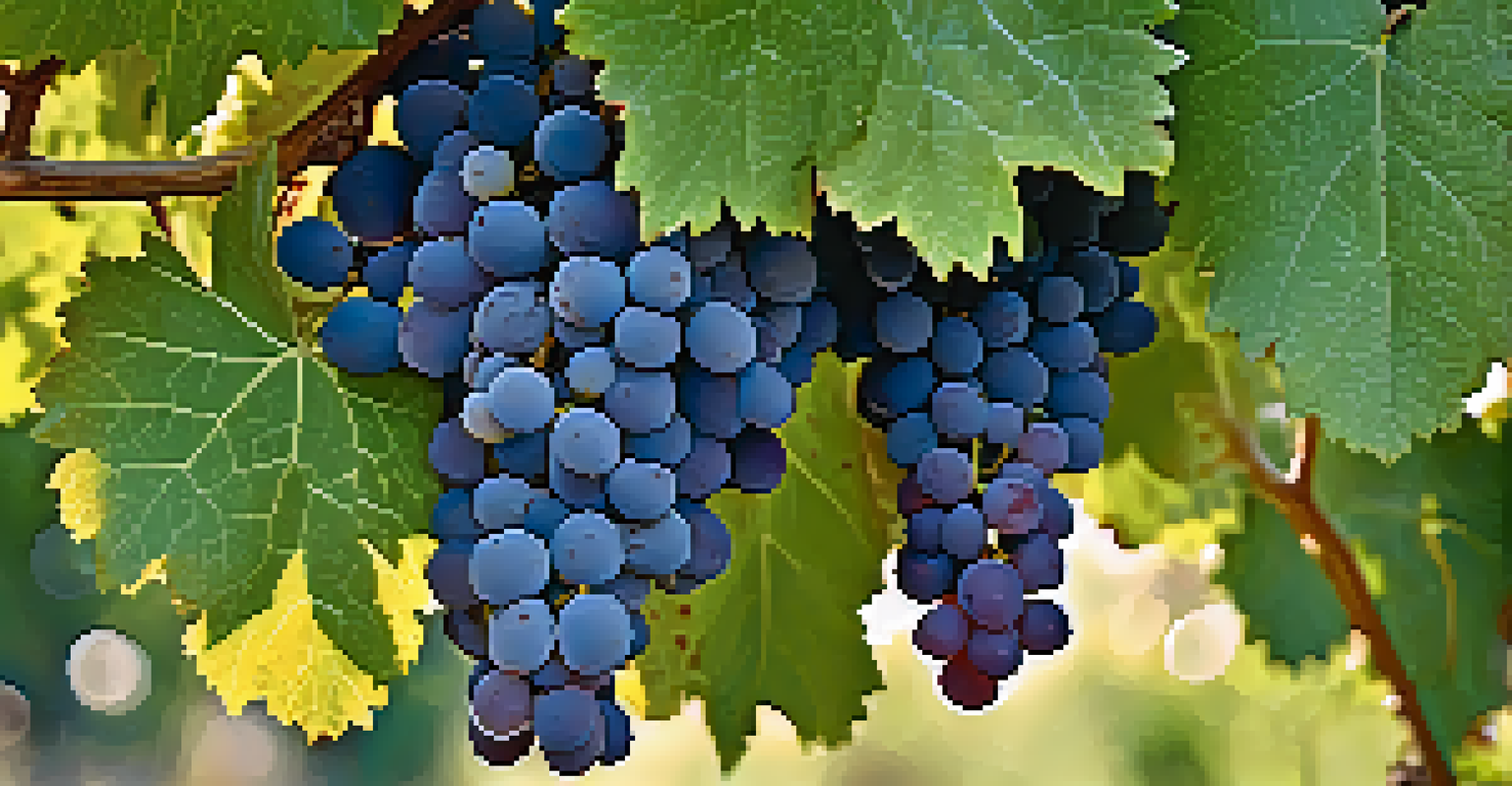A History of Viticulture in California's Wine Regions

The Origins of California Viticulture: Early Beginnings
California's viticulture dates back to the Spanish missions in the late 18th century, when missionaries planted grapes to produce wine for religious ceremonies. These early vineyards primarily featured Mission grapes, a variety that thrived in the region's climate. Although the initial production was modest, it laid the groundwork for what would become a booming industry.
Wine is sunlight, held together by water.
As settlers arrived during the Gold Rush in the mid-19th century, they brought a newfound enthusiasm for wine. This influx of people and culture led to the introduction of European grape varieties, such as Cabernet Sauvignon and Zinfandel. These grapes adapted well to California's diverse microclimates, sparking a viticultural revolution.
By the end of the 19th century, California had established itself as a key player in the wine world. The burgeoning vineyards began to attract attention, not only for their unique flavors but also for their potential to rival European wines.
The Rise of Commercial Winemaking in the 20th Century
The early 20th century saw the establishment of several iconic wineries, such as Beringer and Robert Mondavi, which would shape the future of California wine. These pioneers focused on quality and innovation, experimenting with different winemaking techniques and emphasizing varietal wines. Their efforts shifted the perception of California wines from cheap table wines to premium products.

However, the Prohibition era (1920-1933) posed significant challenges for the industry. Many vineyards were destroyed, and winemakers had to adapt by producing non-alcoholic products or going underground. Yet, this period also saw the emergence of a few resilient wineries that survived by producing sacramental wines or cleverly navigating the law.
California Wine's Rich History
The origins of California viticulture trace back to Spanish missions and have evolved through significant events like the Gold Rush and Prohibition.
After Prohibition ended, the California wine industry experienced a renaissance. The introduction of the California Wine Appellation System in the late 1970s helped consumers identify quality wines based on their geographical origin, further enhancing the state's reputation as a wine-producing powerhouse.
The Impact of the Judgment of Paris on Global Recognition
In 1976, the Judgment of Paris tasting shook the wine world to its core when California wines triumphed over French counterparts in a blind tasting. This event, organized by British wine merchant Steven Spurrier, showcased the exceptional quality of California wines, particularly those from Napa Valley. It was a turning point that catapulted California onto the global stage.
In wine, there is truth.
The results of the tasting surprised many, as France had long been considered the benchmark for fine wines. California's victory not only boosted local pride but also attracted international attention and investment. Winemakers began to experiment more boldly, driven by the desire to replicate this success.
The Judgment of Paris remains a pivotal moment in wine history, inspiring a generation of winemakers to elevate their craft. It also sparked a growing interest in California's diverse wine regions, encouraging exploration beyond Napa Valley, such as Sonoma and Paso Robles.
Diversity of California's Wine Regions: A Closer Look
California's wine regions are incredibly diverse, each boasting unique terroirs, climates, and grape varieties. From the cooler coastal areas of Sonoma to the warmer valleys of Central California, the state's geography plays a crucial role in shaping the character of its wines. This diversity allows winemakers to experiment with different styles and approaches.
Napa Valley is often the most recognized region, famous for its Cabernet Sauvignon and Chardonnay. However, regions like Sonoma, Paso Robles, and Santa Barbara are gaining recognition for their exceptional wines, including Pinot Noir and Zinfandel. Each area has its own distinct flavor profile, influenced by soil, climate, and winemaking traditions.
Sustainability in Winemaking
California winemakers are increasingly adopting sustainable practices to combat climate change and attract environmentally conscious consumers.
This regional diversity not only enriches California's wine offerings but also attracts wine enthusiasts eager to explore new tastes. Wine tourism has flourished, with visitors flocking to vineyards for tastings, tours, and events that celebrate the state's vibrant wine culture.
Sustainability Practices in California Viticulture
As the effects of climate change become increasingly evident, California winemakers are embracing sustainable practices to protect their vineyards and the environment. Many wineries are investing in organic and biodynamic farming methods, which promote biodiversity and reduce synthetic chemical usage. This shift not only benefits the planet but also enhances the quality of the grapes.
Water conservation is another critical focus, with vineyards implementing advanced irrigation techniques to minimize waste. Practices such as drip irrigation and rainwater harvesting are becoming standard, ensuring that winemakers can maintain their crops even during drought conditions. This commitment to sustainability is essential for the future of California's viticulture.
Consumers are also becoming more environmentally conscious, often seeking out wines from sustainable producers. As a result, wineries that prioritize eco-friendly practices not only contribute to the health of the planet but also attract a loyal customer base passionate about supporting responsible agriculture.
The Role of Technology in Modern Winemaking
Technology has transformed the winemaking process, allowing producers to enhance quality and efficiency. From drone technology that monitors vineyard health to sophisticated fermentation equipment, advancements are helping winemakers make data-driven decisions that elevate their craft. This integration of science and art is redefining what it means to produce wine.
One notable example is the use of precision viticulture, which involves collecting and analyzing data to optimize vineyard management. By understanding soil composition, microclimates, and grape ripeness, winemakers can tailor their practices to produce the best possible fruit. This level of detail has led to consistently high-quality wines across the state.
Emerging Trends in Viticulture
The future of California's wine industry is shaped by trends like natural wines, climate adaptability, and a growing interest in wine education.
Moreover, technology isn't just limited to the vineyard; it's also revolutionizing how consumers experience wine. Virtual tastings and online sales have become more prevalent, especially in the wake of the COVID-19 pandemic, making it easier for wine lovers to connect with their favorite producers and discover new offerings.
Future Trends in California's Viticulture
As California's wine industry continues to evolve, several trends are emerging that will shape its future. Natural wines, which emphasize minimal intervention in the winemaking process, are gaining popularity among consumers seeking authenticity and unique flavors. This movement reflects a broader shift towards transparency and sustainability in the food and beverage industry.
Additionally, climate change is prompting winemakers to adapt their practices and explore new grape varieties that can thrive in changing conditions. Regions previously considered unsuitable for viticulture may become the next hot spots for wine production. This adaptability will be crucial in maintaining California's status as a leading wine region.

Finally, the growing interest in wine education and appreciation suggests that the future of California viticulture is bright. With more enthusiasts eager to learn about wine, producers can share their stories and craftsmanship, fostering a deeper connection between consumers and the wines they love.